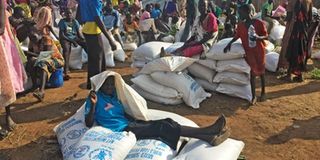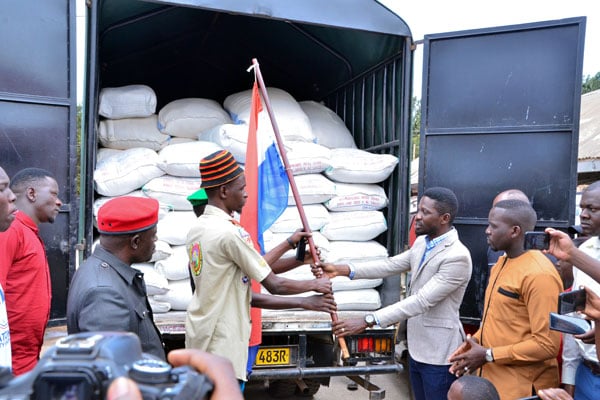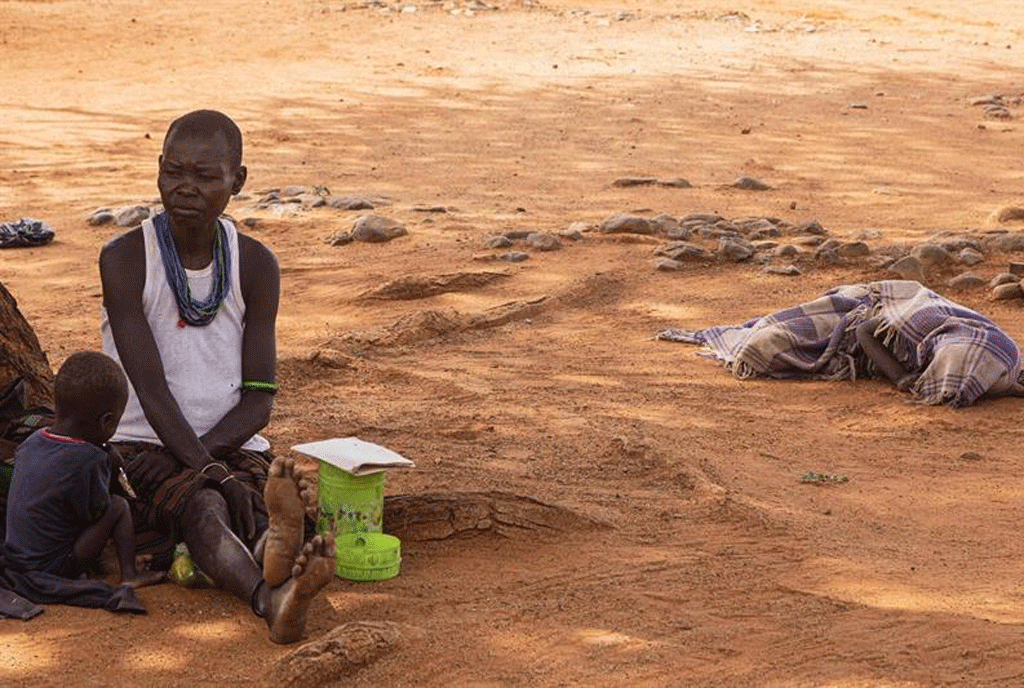Prime
Inside govt plan to fight hunger

Food distribution at Ayilo I Refugee Settlement Camp in Pakele Sub-county, Adjumani District, on June 8, 2020. PHOTO |MARTIN OKUDI
What you need to know:
- Prof Fred Kabi, a specialist from the department of agricultural production, says addressing inaccuracy in weather prediction and giving quality agricultural extension services will be essential in improving production.
The Agriculture ministry has asked the Finance ministry to render financial support in order to purchase farm inputs and machinery to bolster production in the farming season starting next month.
Mr Frank Tumwebaze, the Agriculture minister, told this publication yesterday that they are still assessing the needs of the selected farming entities to come up with the exact amount of money that will be required to intervene.
Covid triggered biggest hunger increase in decades, UN says
However, food security specialists and legislators have said such interventions must go hand-in-hand with food relief.
In a July 12 letter to Finance minister Matia Kasaija, Mr Tumwebaze warned that the emerging threat of food insecurity in some parts of the country might escalate given the poor crop yields for this season.
“The low levels of production are attributed to harsh weather conditions and pests and disease (armyworm) that affected many districts. The yields for this season stand at about 20-40 percent for mainly food security crops,” he wrote.
The Agriculture ministry, according to the letter, intends to prioritise large-scale farmers and production systems in this special intervention in view that smallholder farmers will benefit from the Parish Development Model (PDM).
DON'T MISS: Karamoja struggling to benefit from a rich mineral resource
“While PDM is being rolled out to support smallholder farmers, we can’t predict how next season will perform. We, therefore, propose to partner and support identified large-scale farming entities to produce food security crops on a large scale and thus complement the production volumes of smallholder farmers under PDM,” Mr Tumwebaze said.
Surrendering smallholder farmers, who make up the biggest portion of the farming system, to PDM, whose functioning is being questioned, leaves queries on how effectively this will work out. This also leaves questions about the inclusiveness of the intervention.
Prof Fred Kabi, a specialist from the department of agricultural production, said there is need to boost production among small and medium or large-scale farmers for more sustainable production.
He said addressing inaccuracy in weather prediction and giving quality agricultural extension services will be essential in improving production.
“In areas like central Uganda, bananas are being grown and for them, irrespective of the amount of rain, harvests continue, unlike maize and beans where there has been a total failure,” he said.
“In places like Karamoja, bananas may not be grown. The right response is immediate food handouts because they have to be rescued to avoid death. The good thing is that a few places have rice and maize. If it is true that the PDM is working, let them use the structures to distribute food to rescue people,” he added.
Ms Faith Nakut, the Napak Woman MP, told Parliament on Tuesday that as of July 8, more than 600 starvation-related deaths had been recorded in the districts of Kotido, Napak, Moroto, and Kaabong.
Starvation-related deaths and chronic hunger due to general food shortages have also been reported in some parts of Lango and Bugisu.
But Prime Minister Robinah Nabbanja on Tuesday, said Shs135b will be released to address the food crisis in Karamoja. She said 200 tonnes of food were dispatched from the prime minister’s office towards Karamoja.
“The support they will require from the government will be for buying inputs, machinery to open large chunks of land, on-farm irrigation technologies and mini-storage facilities on the farm. This is, therefore, to present this proposal to you for study,” Mr Tumwebaze wrote to the Finance minister.
Mr Kasaija did not pick up our repeated calls when our reporter reached him for comments.
Strategic plan
According to the Agriculture ministry, the strategic intervention will be channelled towards boosting the production of certain food security crops such as “maize, beans, soybeans, sorghum, cassava and potatoes in the immediate and short term; that is, next seasons (August 2022 and March 2023 respectively.”
The ministry is focusing on increasing production through the Uganda prisons service which currently cultivates 9,000 acres of grain. They are optimistic that they can plant an additional 20,000 for next season and will add more in the subsequent season A of 2023.
The other large-scale producers they are focusing on are National Enterprise Corporation and National Leadership Institute (Kyankwanzi) of the army, National Agricultural Research Organisation, National Animal Genetic Resources Centre and Data Bank (NAGRC & DB) and large scale farmers in Nwoya and other parts of Northern Uganda.




